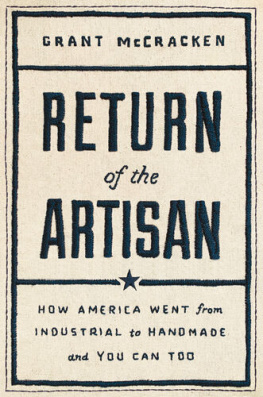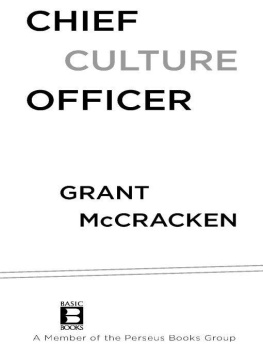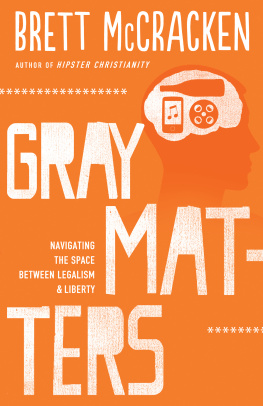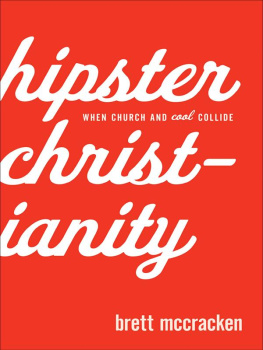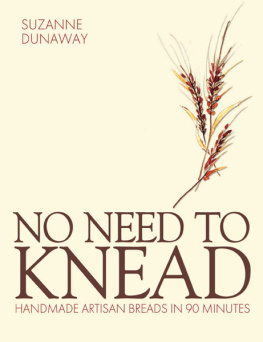Grant McCracken - Return of the Artisan: How America Went from Industrial to Handmade
Here you can read online Grant McCracken - Return of the Artisan: How America Went from Industrial to Handmade full text of the book (entire story) in english for free. Download pdf and epub, get meaning, cover and reviews about this ebook. year: 2022, publisher: SimonSchuster, genre: Art. Description of the work, (preface) as well as reviews are available. Best literature library LitArk.com created for fans of good reading and offers a wide selection of genres:
Romance novel
Science fiction
Adventure
Detective
Science
History
Home and family
Prose
Art
Politics
Computer
Non-fiction
Religion
Business
Children
Humor
Choose a favorite category and find really read worthwhile books. Enjoy immersion in the world of imagination, feel the emotions of the characters or learn something new for yourself, make an fascinating discovery.
- Book:Return of the Artisan: How America Went from Industrial to Handmade
- Author:
- Publisher:SimonSchuster
- Genre:
- Year:2022
- Rating:4 / 5
- Favourites:Add to favourites
- Your mark:
- 80
- 1
- 2
- 3
- 4
- 5
Return of the Artisan: How America Went from Industrial to Handmade: summary, description and annotation
We offer to read an annotation, description, summary or preface (depends on what the author of the book "Return of the Artisan: How America Went from Industrial to Handmade" wrote himself). If you haven't found the necessary information about the book — write in the comments, we will try to find it.
Grant McCracken: author's other books
Who wrote Return of the Artisan: How America Went from Industrial to Handmade? Find out the surname, the name of the author of the book and a list of all author's works by series.
Return of the Artisan: How America Went from Industrial to Handmade — read online for free the complete book (whole text) full work
Below is the text of the book, divided by pages. System saving the place of the last page read, allows you to conveniently read the book "Return of the Artisan: How America Went from Industrial to Handmade" online for free, without having to search again every time where you left off. Put a bookmark, and you can go to the page where you finished reading at any time.
Font size:
Interval:
Bookmark:
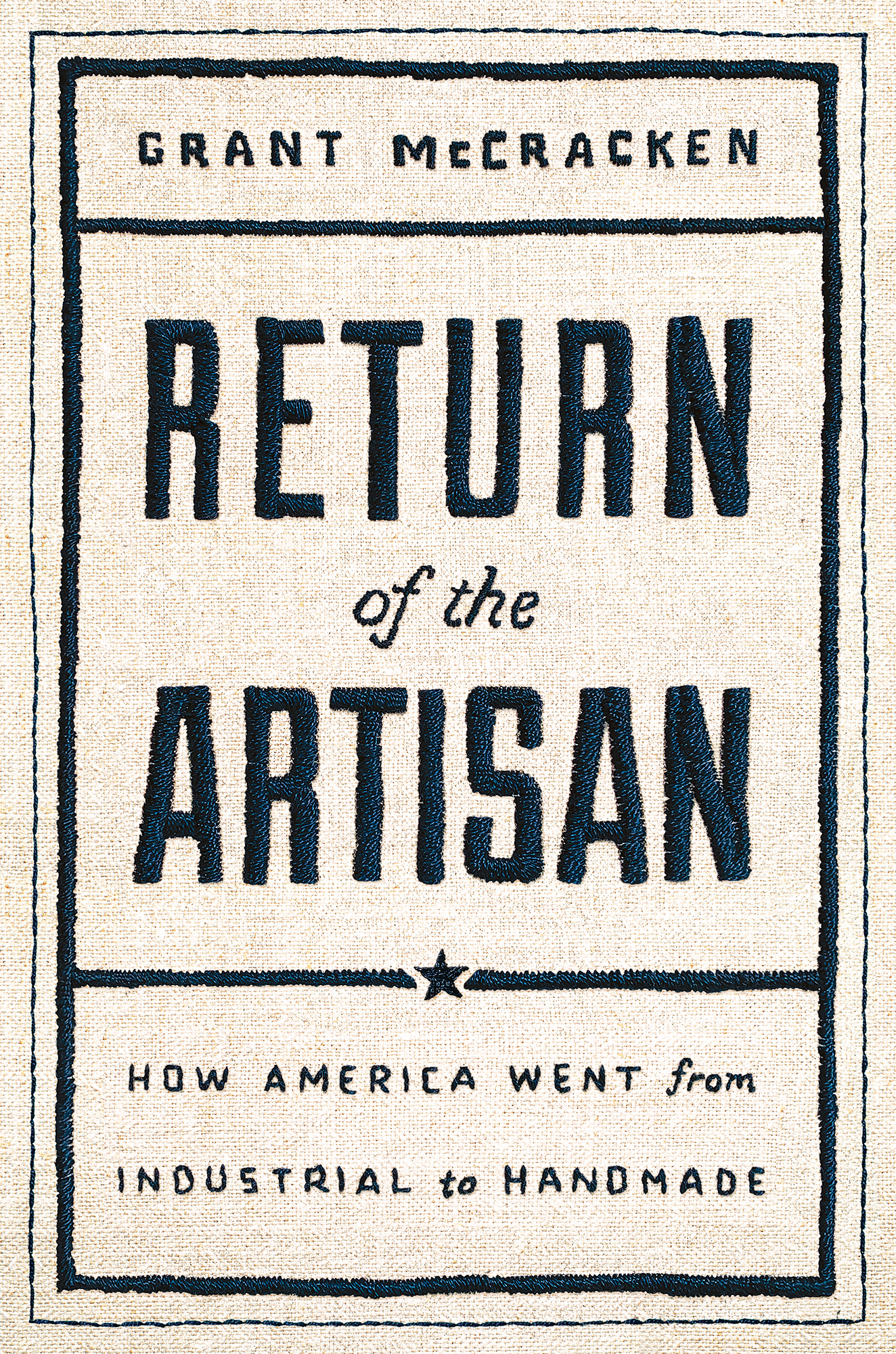
Grant McCracken
Return of the Artisan
How America Went from Industrial to Handmade
Thank you for downloading this Simon & Schuster ebook.
Get a FREE ebook when you join our mailing list. Plus, get updates on new releases, deals, recommended reads, and more from Simon & Schuster. Click below to sign up and see terms and conditions.
CLICK HERE TO SIGN UP
Already a subscriber? Provide your email again so we can register this ebook and send you more of what you like to read. You will continue to receive exclusive offers in your inbox.

To artisans, as they craft their past, present, and future
T he return of the artisan is no small accomplishment. It is taking many thousands of people, starting up dairy farms, workshops, jewelry benches, bakeries, CSAs, chocolate factories, and Etsy accounts. It takes a quiet revolution in Berkeley, Boulder, and Brooklyn. It takes hundreds of thousands of people saying no to conventional career options and asking themselves if they might instead become a maker, an artisan.
And they are becoming increasingly visible. All those jams, cheeses, and handmade toys are beginning to nudge the conventional stuff off the shelves. An alternate world is opening up, and with it, a new idea is surfacing in our culture. Maybe manual labor is not the scorned, lesser work the twentieth century said it was. Maybe the dignity of running your own career, of shaping your own life, is worth the risk after all.
Its a shocking shift in thought. Over the past half century at least, weve become habituated to the idea of office work. For years it was the aspiration of almost everyone with a college degree. We became so very good at committee meetings, corporate-speak, annual reviews, feel-good picnics, and team-building exercises, its a wonder we got any work done at all.
So a new model of work feels appropriately radical. The artisan doesnt wear a suit to work. She doesnt have an office or a parking space. She doesnt lie awake at night worrying about promotions. Her annual review is going to a local caf with a friend and asking, So how am I doing, do you figure? Be honest.
My answer: You are doing pretty darn magnificently.
We live in a time of large-scale, relentless change. Weve all talked a lot about the technological driver of this change, the digital revolution that rewired the social world and gave us a new capitalism in the form of Amazon, Uber, and Warby Parker. Lets call this the digital disruption.
But there is a second, less-talked-about change. This is the artisanal disruption, the shift in what we want from our food, drink, family, community, economy. Thanks to the efforts of Alice Waters and other innovators, our world is moving steadily from the industrial to the handmade and human-scale.
The artisanal economy promises to change American capitalism. It is already giving us a new kind of consumer, a new kind of producer. But its been a difficult birth.
The artisan discredits many things that took root in America after World War II: processed food, mass manufacturing, national brands, chemical and mechanical intervention, cross-country shipping, and especially the factory farm. (Many, in fact, believe that the words factory and farm should never appear in the same sentence.) After the hardships of World War II, we were thrilled to industrialize food. (Recall the popularity of Tang and TV dinners.) Now we are happiest when deindustrializing it.
The artisan does this one small enterprise at a time. They are taking up new kinds of work. They make cheese or soup or jam. They run a coffeehouse. They work as butchers or bakers. They run their own taxi service, thanks to Uber or Lyft. They operate a very small hotel, thanks to Airbnb. Remove the industrial layer of the American economy, and we find millions of small enterprises making their way in the world and in the process making a world for the rest of us.
The Institute for the Future says:
The coming decade will see continuing economic transformation and the emergence of a new artisan economy. Many of the new artisans will be small and personal businessesmerchant-craftspeople producing one of a kind or limited runs of specialty goods for an increasingly large pool of customers seeking unique, customized, or niche products. These businesses will attract and retain craftspeople, artists, and engineers looking for the opportunity to build and create new products and markets.
To be sure, capitalism will never lose its industrial foundations. We cannot hope to supply the world from cottage industries. Apple can take millions of orders for iPhones in a few days and deliver these phones in a month or two. This is an industrial system larger and more efficient than anything ever dreamed of by Adam Smith. But the industrial half of capitalism is losing its prestige and influence. Once great and grand, the industrial piece now threatens to become the back office, the infrastructure, the mere offshore supplier of capitalism. The public face of economics is increasingly a human, artisanal face.
The artisan experiment changes the way we think about daily life. And then it begins to change the way we think of our family, workplace, and community. It says that our locality should be more than the place we live. It says that capitalism exists to create not just economic value, but social value. The artisan says there are no externalities, those brutal side effects of capitalism that we used to ignore. Everything that happens to us belongs to us. Its a single, seamless world.
There are two layers to the artisan experiment. In the first, we have all the exciting changes that innovators like Alice Waters brought to our local economies and our daily lives. In the second, we have the structural effects that follow from these changes, a transformation of the larger social and economic world.
As I say, we have a pretty good handle on the digital disruption, thanks to the work of folks like Clay Shirky, John Seely Brown, and Ethan Zuckerman. For the artisan, there is virtually nothing that gives us the big picture. This book fills the gap. Without it, we are blind men and women in the presence of an extremely largeand growingelephant.
But this book matters not only for intellectual reasons but also for practical ones. The small business is the great engine of our economy. It has created half of the jobs in the private sector and 65 percent of the net new jobs over the last seventeen years. And at the heart of small business is the artisanal revolution. Increasingly, it is the font of value and the future of business.
But if the artisanal economy matters to small businesses, it matters even more to big businesses. The big beer brands, the big cola brands, and the fast-food companies, to name just three, are seeing their markets decline sometimes precipitously. And even when these companies try to adapt, they often get it wrong. The fast-food chain Wendys introduced natural fries, only to discover the nation was horrified by the chemical stew it took to prepare them. The artisan says you cant just talk the talk. Cosmetic changes will not suffice. If a big business wants a place in our emerging economy, it is obliged to honor new principles. This means really understanding the movement.
And finally, the most urgent reason to understand the artisan option: we are watching the great tide of industry roll back, leaving millions of Americans without secure jobs or good incomes. The installation of artisanal economies and communities can help solve this problem by rebuilding both people and communities. And there is no value more valuable than this.
Font size:
Interval:
Bookmark:
Similar books «Return of the Artisan: How America Went from Industrial to Handmade»
Look at similar books to Return of the Artisan: How America Went from Industrial to Handmade. We have selected literature similar in name and meaning in the hope of providing readers with more options to find new, interesting, not yet read works.
Discussion, reviews of the book Return of the Artisan: How America Went from Industrial to Handmade and just readers' own opinions. Leave your comments, write what you think about the work, its meaning or the main characters. Specify what exactly you liked and what you didn't like, and why you think so.


